18 November 2025
From Unknown to Remembered: The Work of Bob Cobley MBE and the Denmark Team
Discover how a moving encounter in a Commonwealth War Graves cemetery sparked a lifetime of war graves fascination for Bob Cobley MBE and the Denmark Team.
Denmark War Graves
An unforgettable moment in Esbjerg New Cemetery

Image: Headstone of Able Seaman Harry Gasson
When a young Bob arrived at the British Embassy in Copenhagen in November 1971, his brief was to work on trade and public diplomacy.
Yet an evening visit to Esbjerg New Cemetery, stopping at a headstone then marked simply “A British Seaman of the Great War”, would set him on a path that has shaped remembrance and the work of CWGC in Denmark for more than five decades.
That seaman is now known to be Able Seaman Harry Gasson of HMS Castor, killed at Jutland on 31 May 1916 and today commemorated by name at Esbjerg – thanks to the work of Bob and The Denmark Team.
Assembling the Denmark Team
 Image: Bob Cobley MBE
Image: Bob Cobley MBE
From his first photographs and informal reports to Embassy colleagues and the Commission, Bob began corresponding directly with Commonwealth War Graves staff in Ieper and Maidenhead in the 1980s.
He drew in like-minded Danish researchers and veterans, forming what came to be known, succinctly and effectively, as “the Denmark Team”.
The Denmark Team are volunteers who, in their spare time and at their own expense, have acted as trusted local partners to help monitor conditions, clarify records and, where evidence permits, restore names to the nameless.
Their contribution has included research leading to rededications like Able Seaman Gasson’s, in line with the Commission’s ongoing duty to amend records and commemorate the missing where new proof emerges.
Commonwealth War Graves in Denmark

Image: The Commonwealth War Graves plot in Esbjerg (Fourfelt) Cemetery
The Denmark Team’s work sits within a wider story of Commonwealth war graves in Denmark. Commonwealth War Graves’ Danish sites tell three overlapping histories.
First, the First World War at sea. Along Denmark’s coasts lie the graves of Royal Navy sailors who died in the North Sea campaign, including casualties of the Battle of Jutland. Frederikshavn Cemetery, for example, contains four First World War naval burials (one unidentified) alongside a larger Second World War plot.
Second, a humanitarian chapter at the end of 1918. Copenhagen Western Cemetery holds 24 Commonwealth First World War graves, mostly former prisoners of war who died in the winter of 1918–19 while awaiting repatriation to Britain under the “Danish Scheme”.
Third, the air war over occupied Europe. Many RAF and Commonwealth aircrew fell over Jutland and the islands on operations over Western Europe.
Esbjerg (Fourfelt) Cemetery contains a CWGC plot of 272 Second World War burials, 25 unknown rows of Portland headstones set within a Danish landscape.
Up in North Jutland, Frederikshavn’s Second World War plot holds 65 Commonwealth burials, “mostly airmen”, with five unknown. And in the capital, Bispebjerg’s plot contains 40 Second World War graves, eight of whom are unidentified.
Together, these sites speak to Denmark’s place on the wartime flightpaths and to the Commission’s commitment to equal commemoration, regardless of rank, creed or nationality.
A decades-long war graves connection

Image: Bob, right, has never lost his fascination for the work of Commonwealth War Graves in Denmark
Bob’s personal connection to Esbjerg never waned.
The “unknown British seaman” he saw in 1972 was later identified, through painstaking research assessed by official authorities, as Able Seaman Harry Gasson.
Our casualty record now carries his name and details; his grave at Esbjerg New Cemetery, one of just a single Commonwealth burial there, stands as a reminder that an unknown need not remain unknown forever.
The Denmark Team’s ID total stands at 16:
- 12 x Royal Air Force Casualties
- 3 x Polish Special Operations Executive Officers
- 1 x Royal Navy casualty of the First World War
In addition to the above, the Denmark Team contributed to the “In From The Cold” research project, identifying Danes in British Service now recognised by CWGC:
- Captain Carl Johan Bruhn
- Flying Officer Niels Juul Rysensteen Buchwald
- Flying Officer Jorgen Billy Thalbitzer
All of this is part of the Commission’s global mission: caring for the graves and memorials of almost 1.7 million individuals at more than 23,000 locations in over 150 countries, and continually improving the historical record where evidence is found.
That mission depends on partnership, between local authorities, national institutions and individuals like Bob and his colleagues, so that the headstones bear the correct names, inscriptions are legible, and stories accessible to the next visitor who pauses to read a name.
Walk any of Denmark’s CWGC plots and you’ll see that partnership in action.
At Esbjerg (Fourfelt), the Cross of Sacrifice rises above long lines of aircrew who never returned. At Bispebjerg and Copenhagen Western, small, carefully tended plots reveal quieter chapters of the wars: captivity, illness, the long road home.
And in a quiet corner of Esbjerg New Cemetery, Gasson’s headstone, once “Known unto God”, now named, captures what Bob Cobley and the Denmark Team, in working closely with Commonwealth War Graves have helped achieve: accurate, dignified remembrance, anchored in evidence and delivered with care.
Bob works under the guidance of a UKNA Regional Manager, as part of the wider United Kingdom and Northern Area team at CWGC. Together, the UKNA team provides the support, oversight, and direction that ensures our volunteers can contribute meaningfully to the Commission’s work. To find out more about Volunteering, click here.

